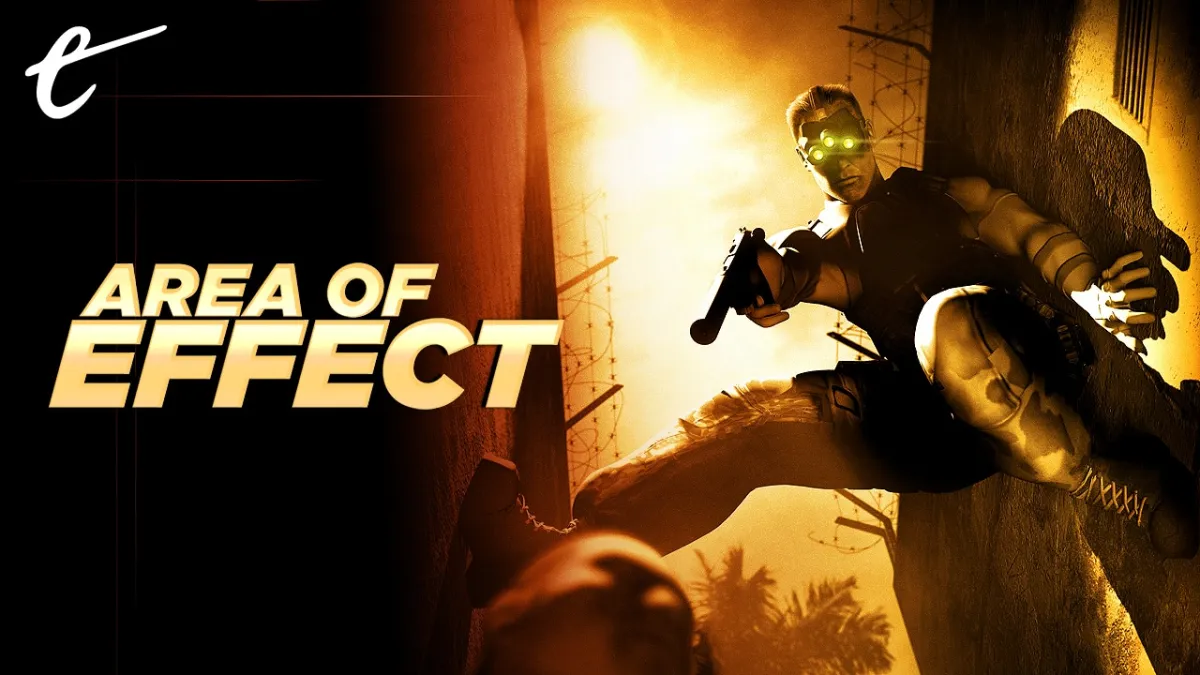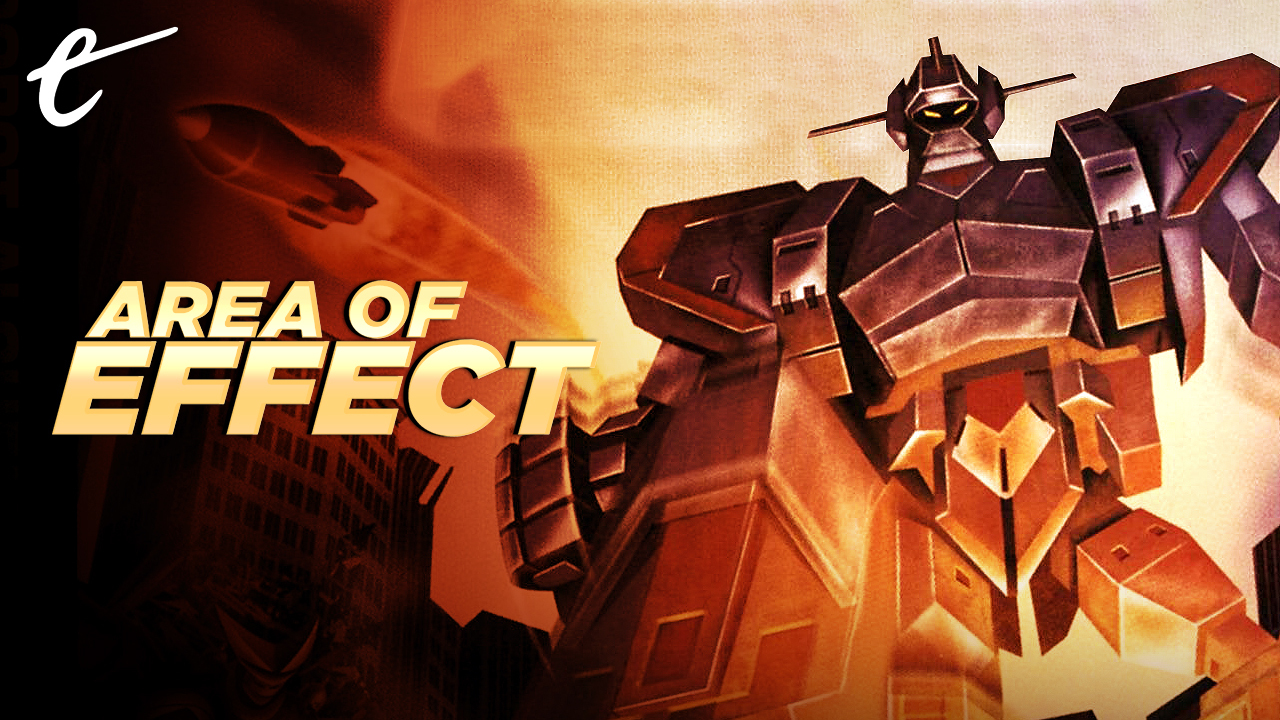It’s been confirmed that the remake of the original Tom Clancy’s Splinter Cell won’t employ open-world level design, which is a blessing – if there’s one Ubisoft character who’d look ridiculous climbing a radio tower, it’s protagonist Sam Fisher. “We are going to keep it linear like the original games, not make it open world,” Ubisoft has remarked.
But the question remains: just how linear? I suspect they’re referring to the way that, from the third Splinter Cell game onwards, you tackled each map in turn. But that’s not the way things were in the original Splinter Cell. In that title, and its direct sequel, the maps themselves were chunked into smaller, more linear paths.
“Hang on,” you might be thinking. “Wasn’t that down to hardware limitations?” Surprisingly, no. Some games did of course suffer from being ported to PlayStation 2 and/or Xbox. For instance, Thief: Deadly Shadows divided its levels into two chunks and separated them with an obtrusive glowing portal in order to fit on Xbox, despite its levels already being smaller than those of Thief or Thief 2. Splinter Cell was another story though.
The team behind the original Splinter Cell, Ubisoft Montreal, did start off with large, open level design, but as they explained in a recent interview, “We ended up creating levels that were too big, which resulted in badly paced gameplay. As a result, the first round of levels were never completed. Afterwards, the level design direction was refocused for the better.”
So, instead of roaming around a building, making your way through myriad patrolling guards, the largest location you’d freely explore would be a single courtyard. Once you made your way to the door on the opposite side, you found yourself in a smaller area, maybe a corridor and a security room. After you sneaked or punched your way past to the door at the end of that corridor, you might have ended up in an open-plan office. You get the picture.

Splinter Cell featured a range of environments, but once you passed through a door, there was no going back. There was, typically, only an exit from each area. How you reached that exit was up to you, but given the reduced size of these mini-areas, you had fewer choices than in, say, Hitman: Contracts.
But it was absolutely the right choice. Making the levels smaller meant you had to quickly assess the opportunities available to you and act on them appropriately. Sure, crawling along that pipe might have seemed like the easy option, but you’d be a sitting duck if someone spotted you. Maybe you could lurk in those darkened areas, but were they dimly lit enough to conceal your presence?
Style was also a factor. You could just duck behind a desk, but it was far cooler to do a split jump into a corridor and KO an enemy as they walked beneath you. Splinter Cell didn’t give you marks for style, but each time I played, I was mentally tallying up my “cool factor.” Let’s face it – if you’re being voiced by Michael Ironside, you sure as hell don’t want to let the man down.
On top of that, having smaller, more linear levels dialed up Splinter Cell’s tension. Unlike in Thief, Dishonored, and Hitman, Splinter Cell’s missions were planned with military precision because, well, you were in the military. Sam was a former Navy SEAL and not the kind of man to mess around.

So, not being able to turn around and flee made perfect sense. You needed to have your eyes on the prize; you couldn’t set a trap and move to another floor just in case something went wrong. You had your boss Lambert and the tech-savvy Grim whispering in your ear, who no doubt would have something to say about forging your own path. And because you couldn’t retreat to a safe distance, you’d hold your breath each time a guard came past, praying they didn’t notice you.
There were a couple of times when I resented the linearity of Splinter Cell. I can still remember sneaking my way downstairs, dodging the broken glass that would have given my position. I felt like such a badass super spy – right up until the moment the door wouldn’t open because the game expected me to take another path.
Splinter Cell: Chaos Theory, the third entry in the series, saw Splinter Cell switching to a more conventional open-map system, which coming from the previous two games was a little jarring. However, it means the Splinter Cell remake team is facing a game-changing choice.
On one hand, Ubisoft could stay true to the original Splinter Cell, elevating its tension factor and helping to maintain momentum. On top of that, it would be an effective way of ensuring that certain encounters happened. Instead of having to cram information into a cutscene, you could guarantee that Sam would be in the right place to overhear essential conversations.

On the other hand, is that enough to achieve Ubisoft’s aims? As much as I loved the chunked level design of the original Splinter Cell, I can’t think of a single modern stealth game that adopts the same approach. Even if Ubisoft Toronto did decide to adopt the original game’s approach for the Splinter Cell remake, it would have a tough job justifying it to its paymasters, as no one wants to risk seeing their game referred to as “dated.” Thief 4’s levels weren’t as sub-divided as in Splinter Cell, but they were less open than in previous titles and notably lambasted for it, which could serve as a warning.
Ultimately, this reboot isn’t just for existing Splinter Cell fans. For it to be a commercial success, it’ll have to hook a whole new generation of players, not just old-school players who’ve been craving Sam’s return since 2008. It’s about compromise, and to that end, I’d like to see the remake remember its legacy, to blend more modern design with some of the room-by-room levels that really made you feel like a man on a mission.
Maybe then we’ll get a Splinter Cell remake that’s the best of both worlds, honoring the game’s roots while keeping its three glowing eyes on the future. After all, it’s not like we’re going to lose Michael Ironside, right? Right?






Published: Jan 4, 2022 11:00 am